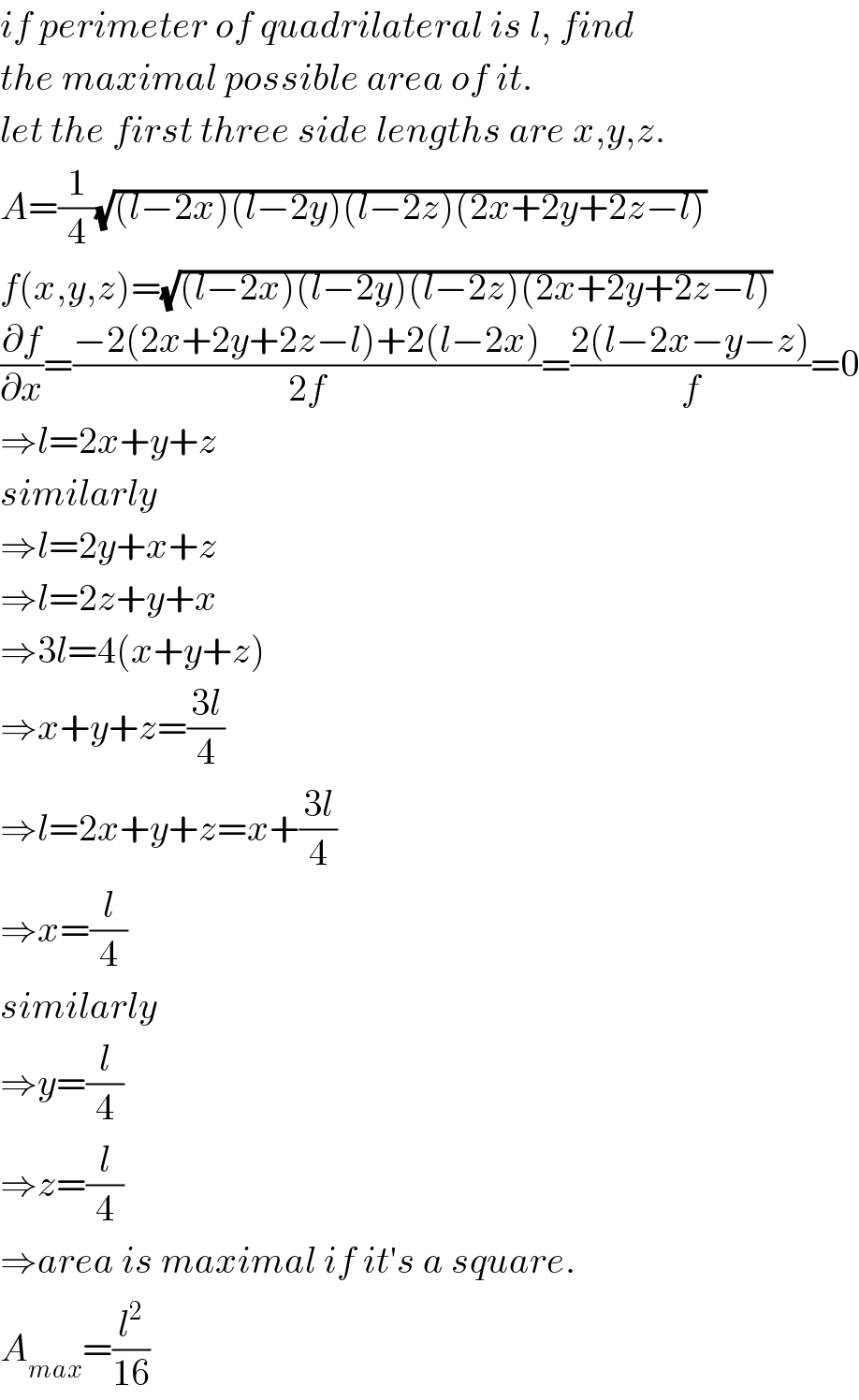
Question and Answers Forum
Question Number 30233 by ajfour last updated on 18/Feb/18

Commented by ajfour last updated on 18/Feb/18

Answered by mrW2 last updated on 19/Feb/18
![let ∠B=α, ∠D=β<α a^2 +b^2 −2ab cos α=c^2 +d^2 −2cd cos β ab sin α=cd sin β (dβ/dα) A=(1/2)(ab sin α+cd sin β) (dA/dα)=(1/2)[ab cos α+cd cos β (((ab sin α)/(cd sin β)))] (dA/dα)=(1/2)ab (cos α+((sin α)/(tan β)))=0 ⇒tan α=−tan β ⇒α=π−β or α+β=π⇒cyclic! a^2 +b^2 +2ab cos β=c^2 +d^2 −2cd cos β 2(ab+cd)cos β=c^2 +d^2 −a^2 −b^2 ⇒cos β=((c^2 +d^2 −a^2 −b^2 )/(2(ab+cd))) ⇒sin β=(√(1−(((c^2 +d^2 −a^2 −b^2 )^2 )/(4(ab+cd)^2 )))) =((√((2ab+2cd+c^2 +d^2 −a^2 −b^2 )(2ab+2cd−c^2 −d^2 +a^2 +b^2 )))/(2(ab+cd))) ⇒sin β =((√([(c+d)^2 −(a−b)^2 ][(a+b)^2 −(c−d)^2 ]))/(2(ab+cd))) ⇒sin β =((√((−a+b+c+d)(a−b+c+d)(a+b−c+d)(a+b+c−d)))/(2(ab+cd))) ⇒sin α=sin β A_(max) =(1/2)(ab+cd) sin β=(1/2)(ab+cd)×((√((−a+b+c+d)(a−b+c+d)(a+b−c+d)(a+b+c−d)))/(2(ab+cd))) ⇒A_(max) =(1/4)(√((−a+b+c+d)(a−b+c+d)(a+b−c+d)(a+b+c−d))) with s=((a+b+c+d)/2) ⇒A_(max) =(√((s−a)(s−b)(s−c)(s−d)))](Q30237.png)
Commented by ajfour last updated on 19/Feb/18

Commented by mrW2 last updated on 19/Feb/18

Commented by ajfour last updated on 19/Feb/18

Commented by Tawa11 last updated on 06/Sep/24

